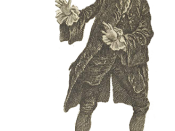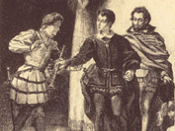All written texts attempt to explore and interpret the world around them. The distinctive historical, social, political and cultural contexts of each composer always have a considerable impact on how a particular text is formed. It is therefore natural for every written text to contain reflections of the values of their time. These unique values greatly influence the way particular themes are represented within a text, and consequently play a large role in shaping the text's meaning.
If a single text undergoes a transformation to suit a new context, the themes within the original text may still be valid despite the change in the social or cultural circumstances of the time. However, they would be interpreted differently by the new context, shaping a different form and meaning of the original text. William Shakespeare's Hamlet, and Tom Stoppard's Rosencrantz and Guildenstern are Dead (R&G), are an example of this contextual transformation.
Shakespeare's Hamlet was written at the dawn of the 17th Century in Elizabethan England at a time when the monarchy was the head of the Church of England and very well established. It was believed that the universe was a 'Chain of Being' with God at the top closely followed by royalty, and then all the normal people at the lowest level. Religion and the monarchy had a strong influence over all the people. This, along with the political volatility, growing religious doubt and threat of invasion provided the perfect milieu for a revenge tragedy with desirable elitist characters.
During this period there were certain social conventions regarding the revenge tragedy theme and in order for Hamlet to appeal to the audiences and succeed, Shakespeare was restricted to complying with social norms, limiting his creativity in regards to the values he presented in the play. The hero Hamlet is...


